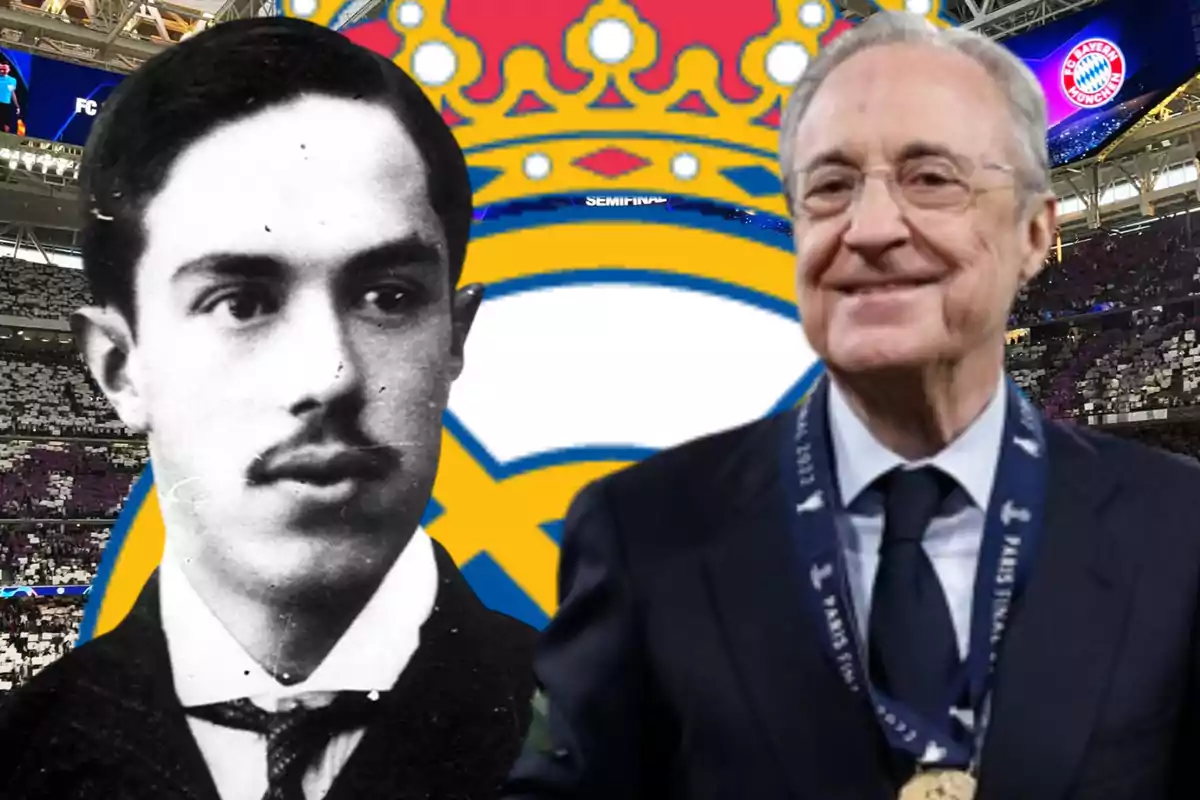
All presidents in Madrid's history: from Julián Palacios to Florentino
The more than 100 years of history of the white club through its top-level leaders
Real Madrid has shaped much of soccer history, in part thanks to all its presidents. During the second half of the last century, it began to set the path and trends in the European soccer elite, a task as exhausting as it is complicated that it has kept up since then.
Julián Palacios
The first president of Real Madrid. A university student, he led the white club between 1900 and 1902, but without establishing it as a sports or competitive entity. It was a pastime inherited from England, where soccer had already caused a sensation among English workers.
Juan Padrós
Juan Padrós is one of the founders, along with his brother Carlos, of Real Madrid as we know it today. Both brothers created the white club on March 6, 1902 and, just a year later, the Spanish capital entity created and won its first title: the Concurso Madrid. That competition was the foundation for the modernization of the current Spanish League and acts as the first precursor of the Copa de España.
During the last year of his presidency, 1904, Madrid Foot Ball Club absorbed AS Amicale and formed an association with Moderno FC to boost the soccer reach of both clubs. He was president of the seed of the Royal Spanish Football Federation until 1913.
Carlos Padrós
Brother of Juan Padrós and founder of Real Madrid, Carlos Padrós's presidency was the first great winning cycle in the team's history. Madrid Foot Ball Club was already participating in the main competitions created in our country, achieving the first four regional championships and the first four victories in the Copa de España.
He was also the first to provide the Madridist club, following models previously created in England, with a solid and organized structure both on and off the field. Carlos Padrós introduced new regulations, permanent playing fields, the firstclubhouse, and the first "mandatory payment" membership fees. He presided over the white club between 1904 and 1908.
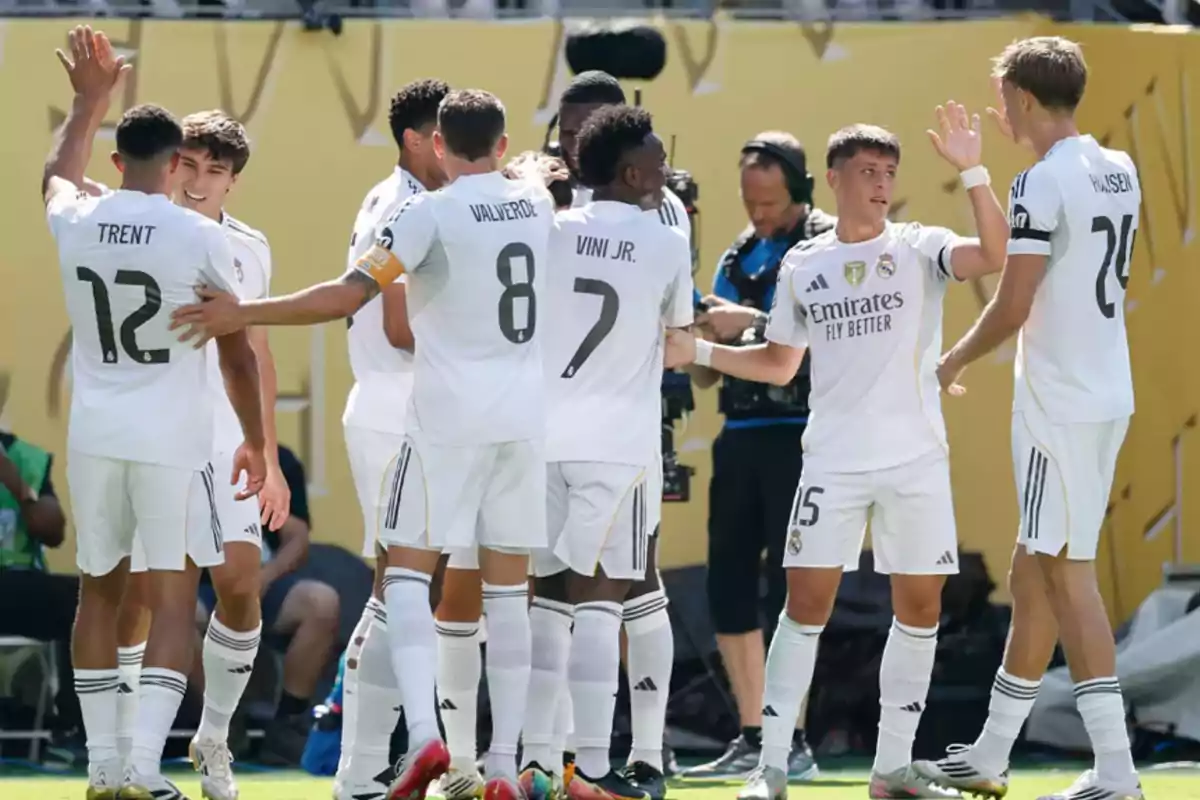
Adolfo Meléndez
The first stage of Adolfo Meléndez, between 1908 and 1916, offered a continuist approach regarding the changes and modifications introduced by Carlos Padrós. Meléndez inaugurated the new playing field located in O'Donnell, which at that time had a stand for a maximum of 200 people. His second presidency was the toughest.
Right after the Civil War that devastated our country, Adolfo Meléndez found himself at the helm of a shattered Real Madrid, with the stadium in ruins and barely any players. Under his management, a certain normality was restored: the Old Chamartín was operational again on October 22, 1939. During his two terms, Real Madrid won three regional championships.
Pedro Parages
The history of Real Madrid couldn't be understood without his influence. In addition to being the creator of the regulation under which the Padrós brothers founded Madrid Foot-Ball Club, Pedro Parages modernized the playing field located in O'Donnell by adding fences. He was also the forerunner of soccer as a spectacle: he started ticket sales in our country.
President of Real Madrid between 1916 and 1926, Pedro Parages will be remembered for the inauguration of the Chamartín stadium in 1924, another step toward the modernization of the white club. The Merengue entity received, from Alfonso XIII, the title of "Real" under his leadership. With him, the club's trophy cabinet expanded thanks to four regional championships and one Copa de España.
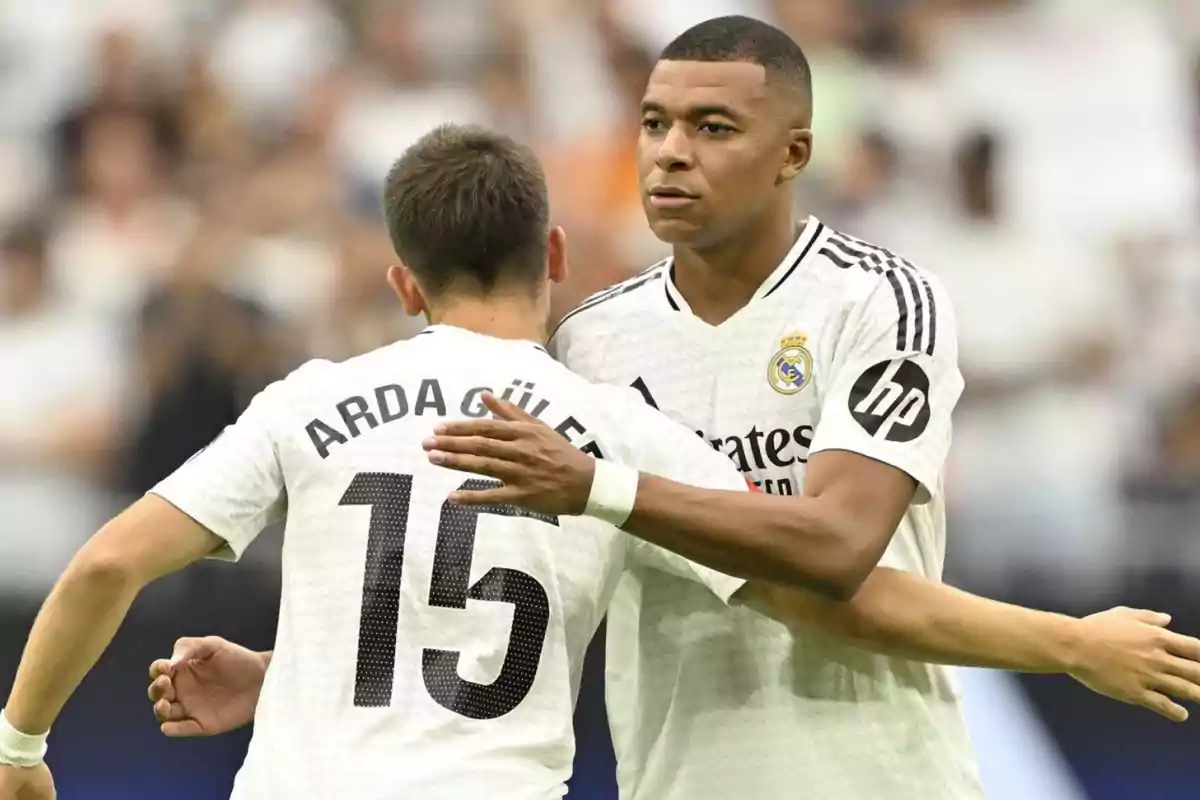
Luis de Urquijo
The arrival of Luis de Urquijo to the presidency of Real Madrid, between 1926 and 1930, meant the definitive push toward modernity. Supported by his great fortune as a marquis, he was among the first to make payments to ensure that footballers played for Real Madrid.
The white squad was slowly filled with professionals, leaving behind the amateur spirit of its early decades. The first two professional contracts of the white club, signed with Miguel Álvarez García "Miguelón" and José Mª Peña Saralegui, took place with Luis de Urquijo as Merengue president. Thanks to his management, Real Madrid began to expand throughout the Americas and won three more regional championships.
Luis Usera
Located between 1930 and 1935, Luis Usera's term meant the arrival of the great talents of the era. That decision had an effect in the 31/32 season: an undefeated League championship. The "divine" Ricardo Zamora, Ciriaco, Quincoces, and Pepe Samitier were the most notable signings of those five years.
Luis Usera unexpectedly assumed the presidency: Antonio Bernabéu, who had been elected, left the position to preside over the RFEF. With Usera at the helm, the maxim "a good team equals good revenues" was applied, which lifted the Merengue squad to the top. All that progress was completely lost due to the Civil War.
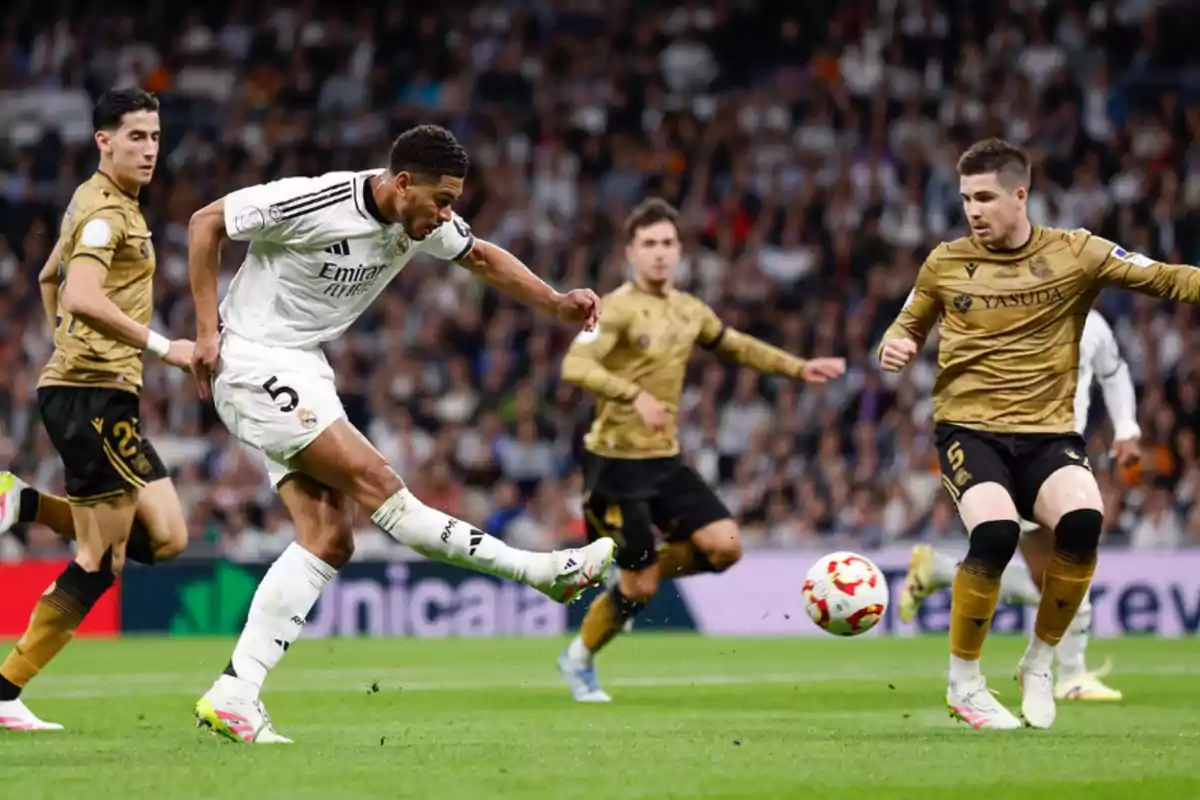
Rafael Sánchez-Guerra
Rafael Sánchez-Guerra's presidency was brief, shortened by the outbreak of the Civil War, but intense. This republican politician reached the top of Real Madrid in 1935, after holding several positions in the Second Republic, and was forced to leave it in 1936.
He continued the policies applied by Luis Usera, seeking the most talented and relevant players of the moment. His main goal was always the construction of a new stadium, while also aiming to obtain a headquarters and legal status in line with the activity carried out by Real Madrid.
Antonio Santos Pedralba
After the restoration facilitated by Adolfo Meléndez, Santos Pedralba set out to completely rebuild the club between 1940 and 1943. He couldn't make that dream come true due to a forgettable episode: the semifinal of the Copa del Generalísimo, between FC Barcelona and Real Madrid, in 1943. Those incidents ended with the resignation of the leaders of both clubs.
Both matches were truly tense and filled with verbal and physical clashes. The first leg was played at Les Corts stadium, where Real Madrid lost 3-0. The return match, played at Chamartín, resulted in the first major thrashing of the eternal rival: 11-1.
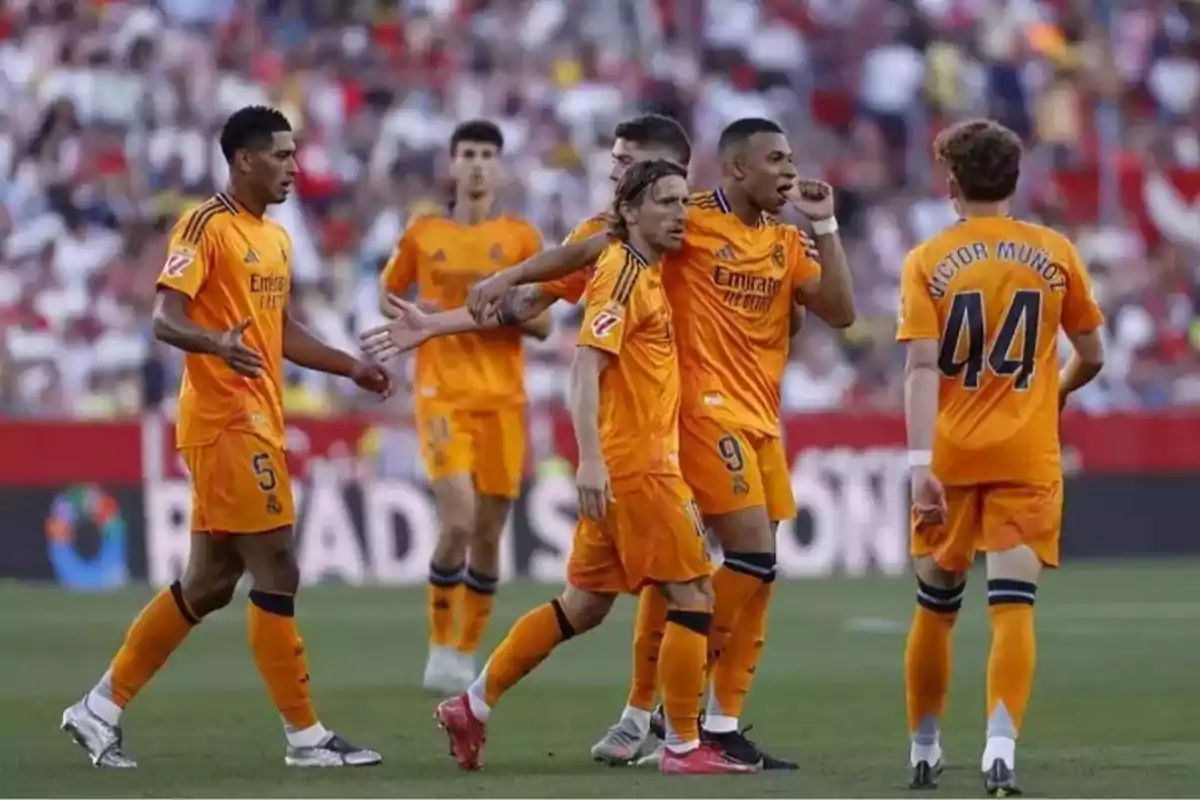
Santiago Bernabéu
Between 1943 and 1978, Santiago Bernabéu took charge of Real Madrid. At just 20 years old, the newly graduated law student took over from Santos Pedralba to recover everything that Real Madrid had been before the Civil War. Player, coach, director, and president, Santiago Bernabéu's life was only white, the color of Real Madrid.
Under his leadership, the great continental competition was created: the European Cup, the seed of today's UEFA Champions League. The legendary leader also built the New Chamartín, which would later bear his name, and began the construction of the old Sports City.
The era of Santiago Bernabéu is one of the most fruitful in terms of titles. In the soccer section, six European Cups, 16 Leagues, one Intercontinental Cup, 6 Copas de España, 2 Latin Cups, and 2 Small World Cups were won. In basketball, 19 Leagues, 18 Copas de España, 6 European Cups, 3 Intercontinental Cups, and one Latin Cup.
Luis de Carlos Ortiz
The era of Luis de Carlos, between 1978 and 1985, is a continuation of all the successes established by Santiago Bernabéu in previous years. Following the model of the president from La Mancha, Luis de Carlos Ortiz facilitated the gradual rise of the Quinta del Buitre to the first team.
He also called to his side great coaches such as Alfredo di Stéfano, Luis Molowny, or Amancio. The soccer record was expanded with 2 Leagues, 2 Copas de España, and one UEFA Cup. In basketball, one European Cup, one Intercontinental Cup, one Cup Winners' Cup, 5 Leagues, one Copa de España, and one Spanish Super Cup were added.
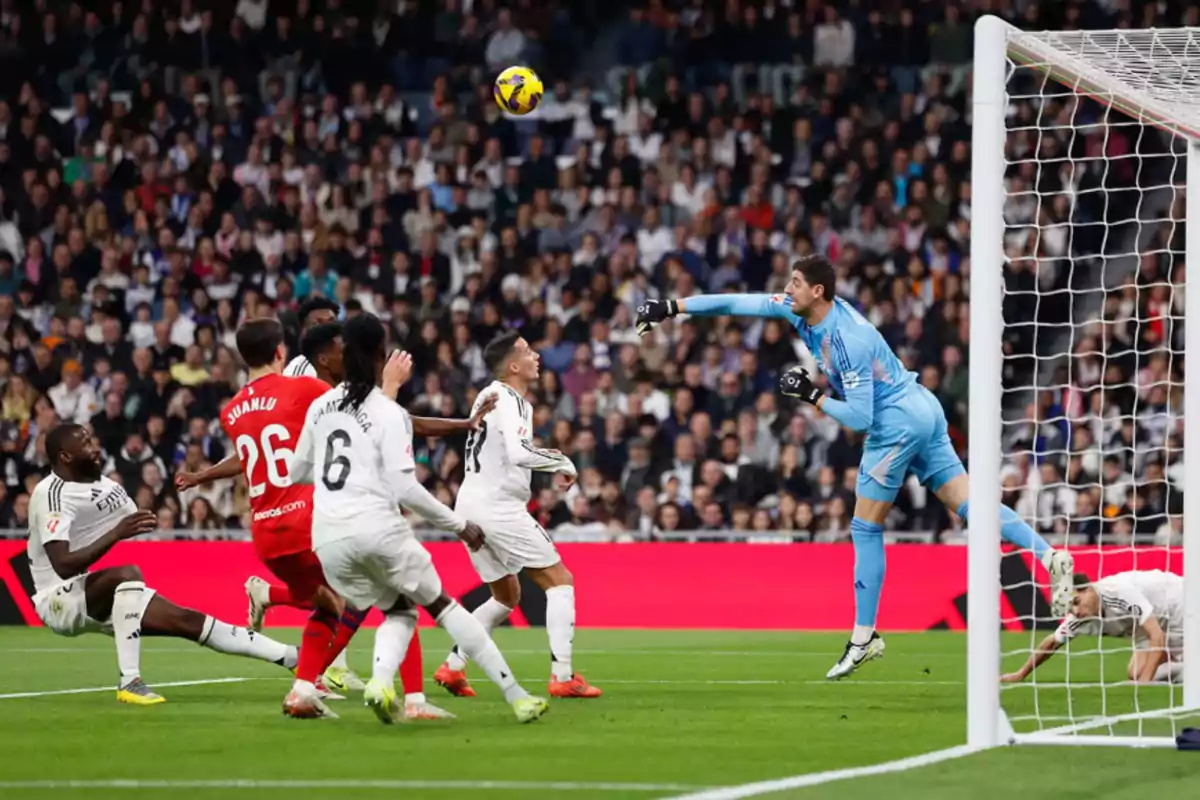
Ramón Mendoza
Ramón Mendoza's presidency, a whole decade, is marked by the consolidation of the Quinta del Buitre in the first team... with all the titles won thanks to that collection of excellent homegrown players, who dominated Spanish soccer for so many consecutive years.
With Ramón Mendoza, Real Madrid won: 6 Leagues, 2 Copas de España, 4 Spanish Super Cups, one UEFA Cup, one League Cup, and one Ibero-American Cup. The basketball section achieved, during those ten years, one European Cup, 3 Leagues, 3 Copas del Rey, 2 European Cup Winners' Cups, and one Korac Cup.
Lorenzo Sanz
Responsible for managing and administering the club between 1995 and 2000, Lorenzo Sanz was more than a president: he also broke the European Cup curse. For 32 years, the white club hadn't won a European title: Pedja Mijatovic's goal, against Juventus in 97/98, broke the spell and brought the Seventh. The boost he gave to the basketball section is also memorable.
Father of Fernando and Lorenzo, basketball and football players respectively, he passed away on March 21, 2020. The soccer section achieved 2 European Cups, one Intercontinental Cup, one League, and one Spanish Super Cup. In basketball, one League and one Cup Winners' Cup were won.
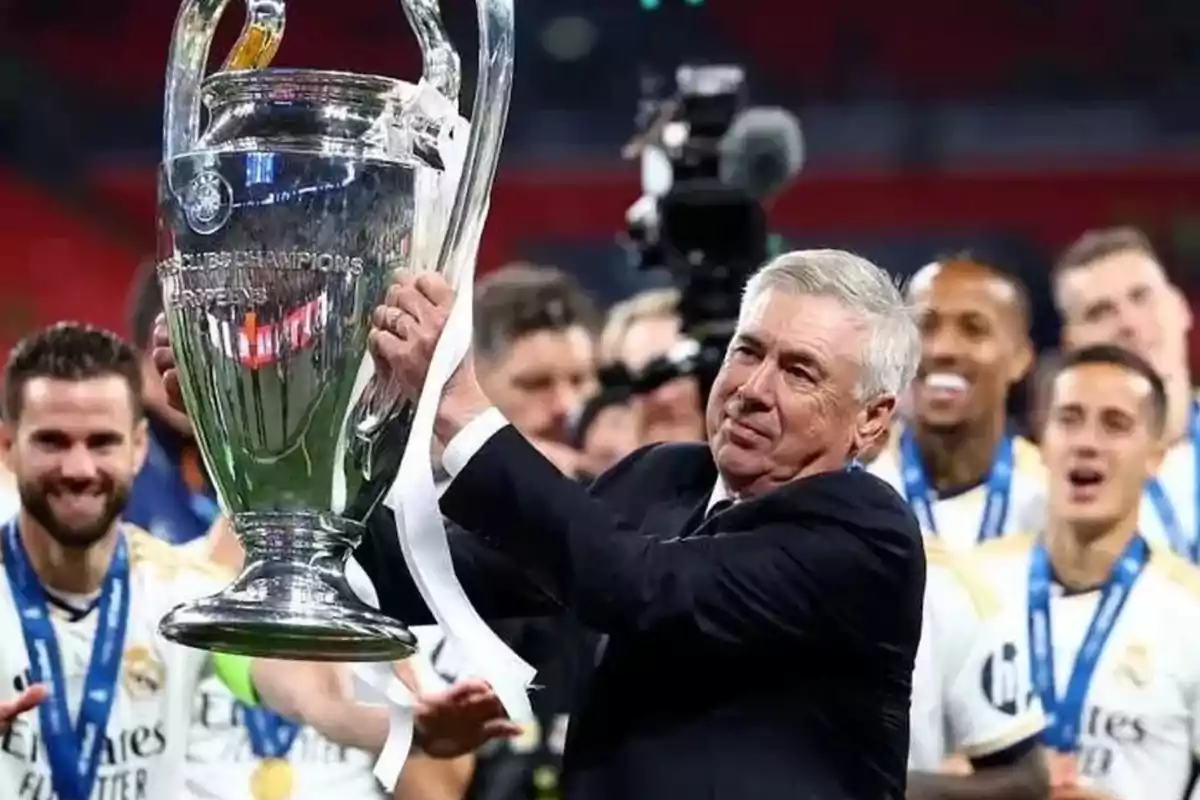
Ramón Calderón
Ramón Calderón succeeded Florentino Pérez as president of Real Madrid, holding the position between 2006 and 2009, although he had been a member of the board of directors since 2002. One of his most memorable measures, in his three years as president, was appointing Pedja Mijatovic as sporting director.
He also facilitated the generational change in the first team, leaving behind the era of the Galácticos with high-profile signings, without forgetting prospects such as Marcelo Vieira. In the soccer section, 2 Leagues and one Spanish Super Cup were won. The basketball players won one League and one ULEB Cup.
Vicente Boluda
He served as interim president of Real Madrid in 2009, while elections were held to choose the new white leader. After the resignation of Ramón Calderón, the businessman temporarily took control of the white squad, without significant changes, until the definitive return of Florentino Pérez Rodríguez.
Florentino Pérez
Perhaps the most remembered president of Real Madrid along with Santiago Bernabéu. The impact that the current white leader has left on the club, in his two terms, is indelible. His first period covers the years 2000 to 2006, highlighted by the construction of the new Sports City, located in Valdebebas, and the soccer project of the Galácticos.
That "experiment" made up of Luis Figo, Zidane, or Beckham didn't quite work out in sports terms, so he decided to resign to make way for a new leadership of the team. The resignation of Ramón Calderón led to an election period that he won and, since then, he has restored the club's prestige.
His second term, with the exception of Bernabéu's own leadership, may well be the most glorious in the Merengue squad's history: for the signings and for the titles won. In soccer, it totals 7 Champions Leagues, 7 Club World Cups, 6 European Super Cups, 7 Leagues, 3 Copas del Rey, and 7 Spanish Super Cups. In basketball, there are 3 European Cups, one Intercontinental Cup, 9 Leagues, 7 Copas del Rey, and 9 Spanish Super Cups.
More posts: